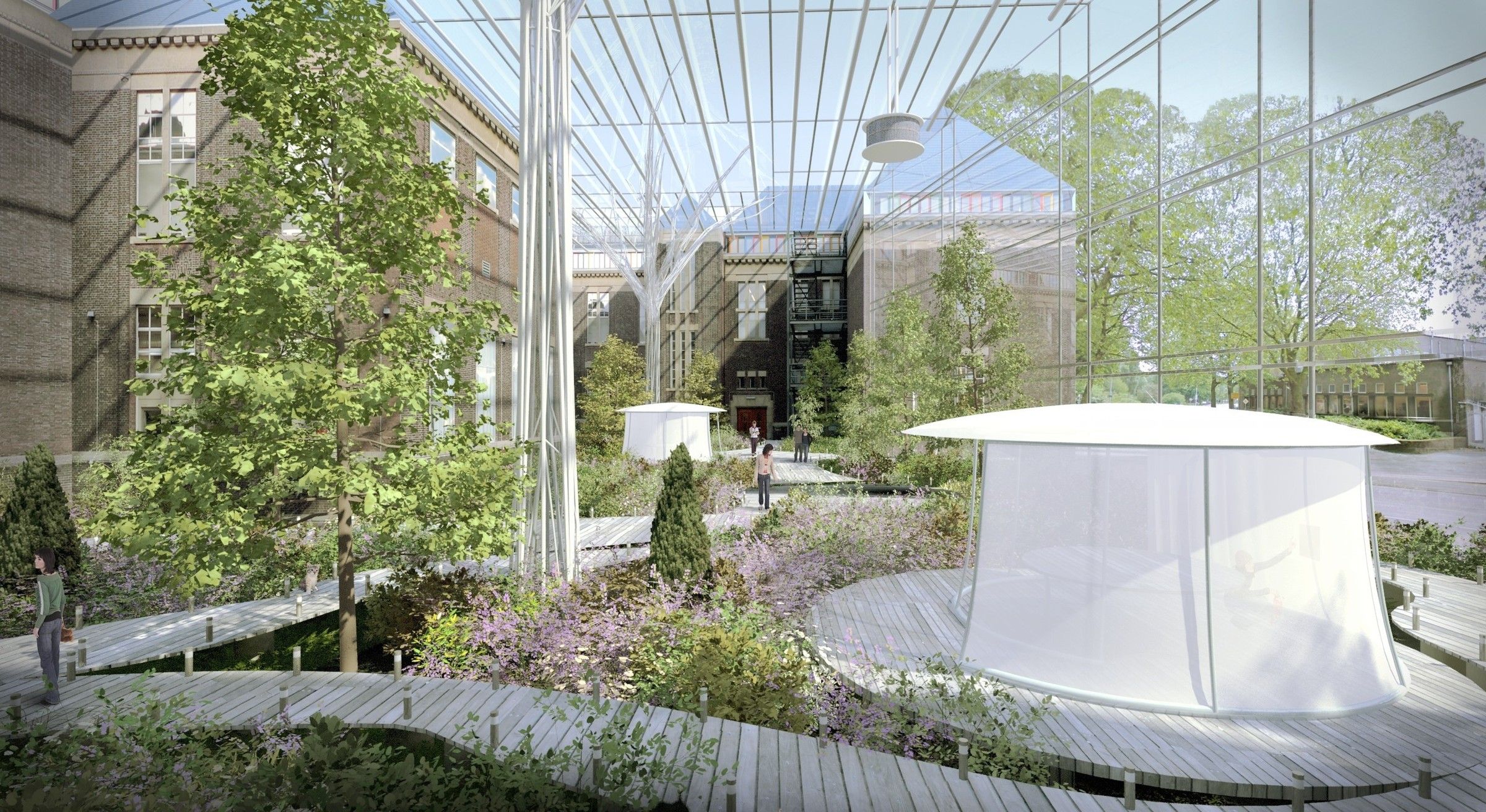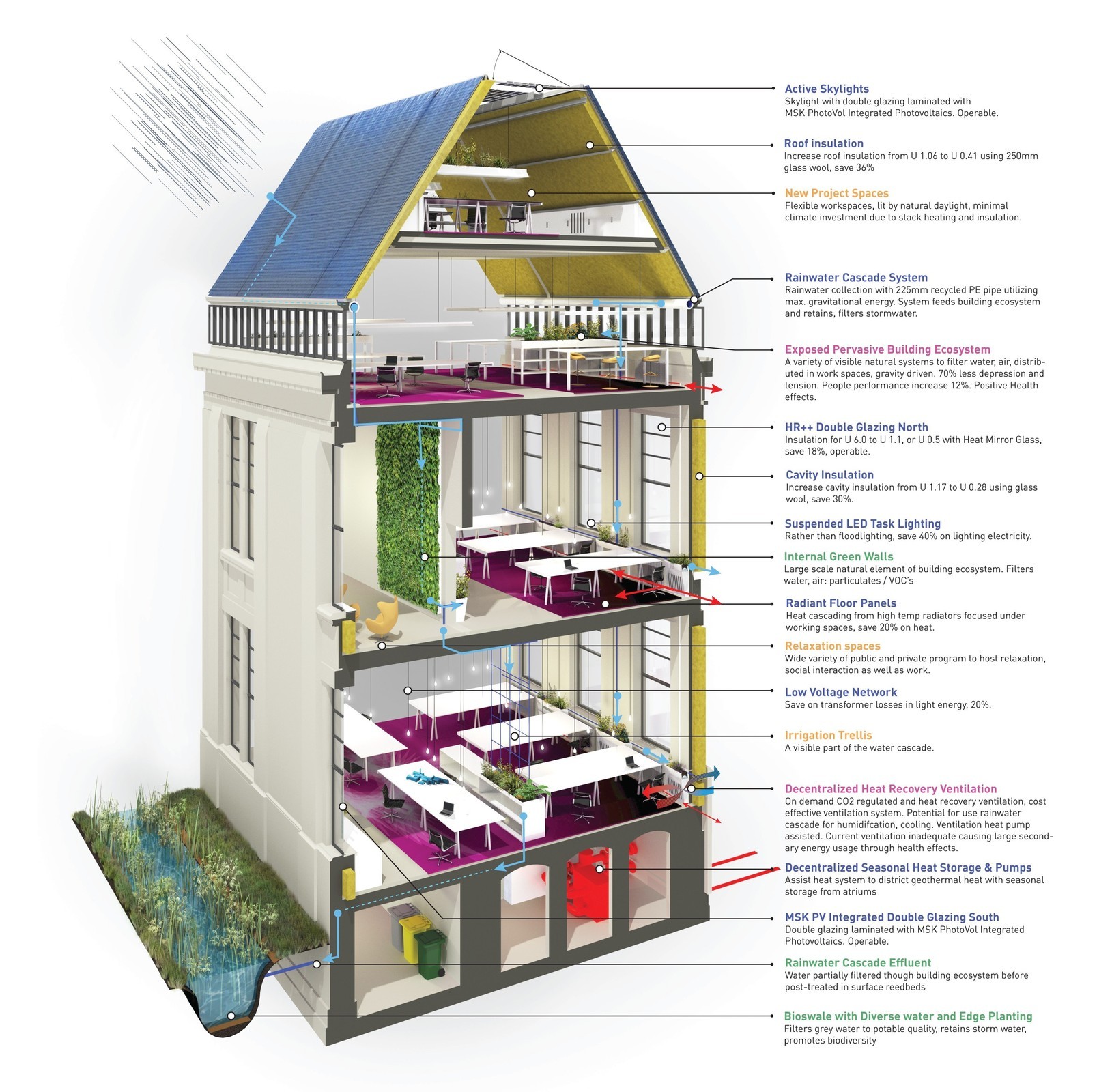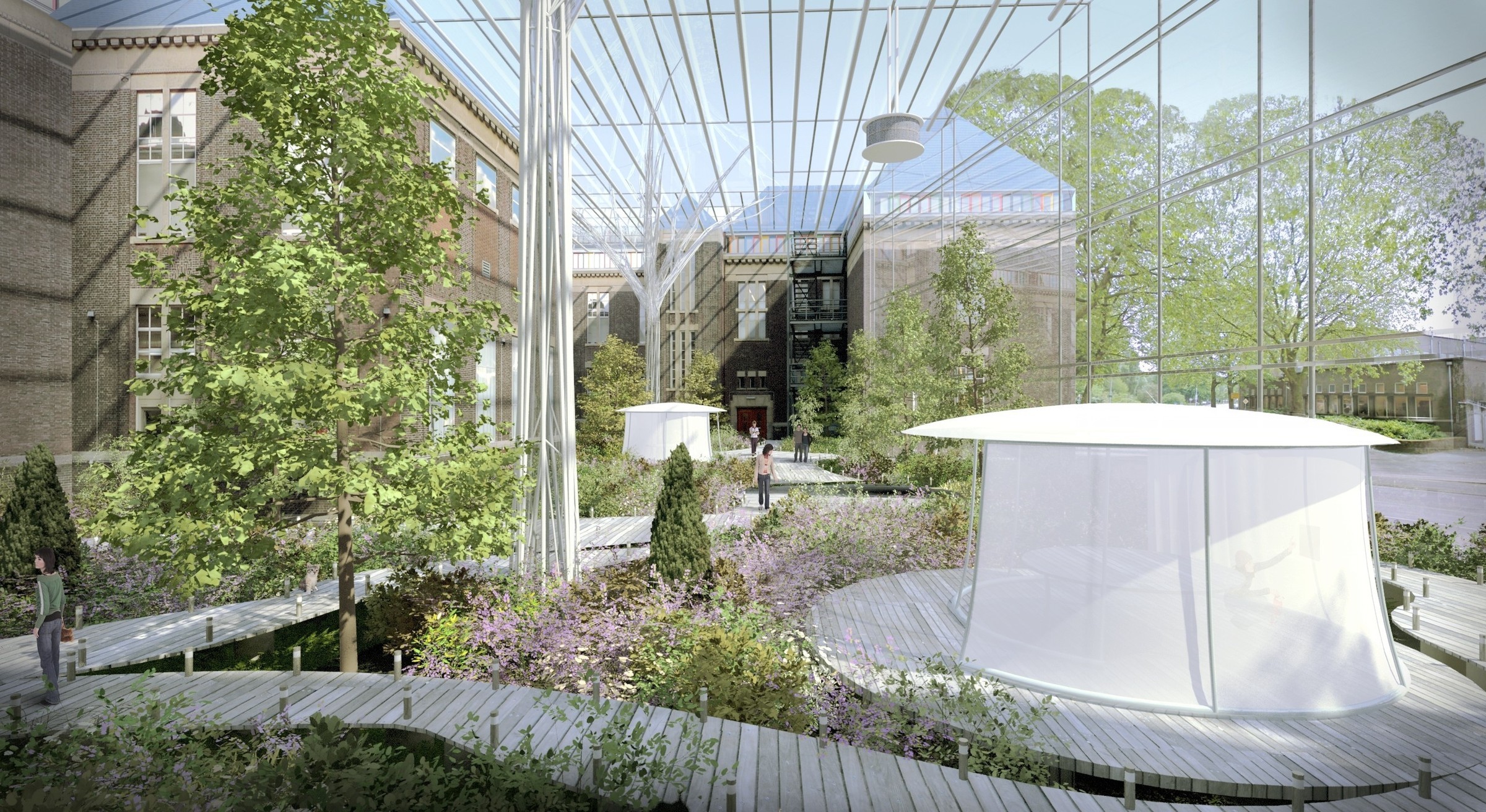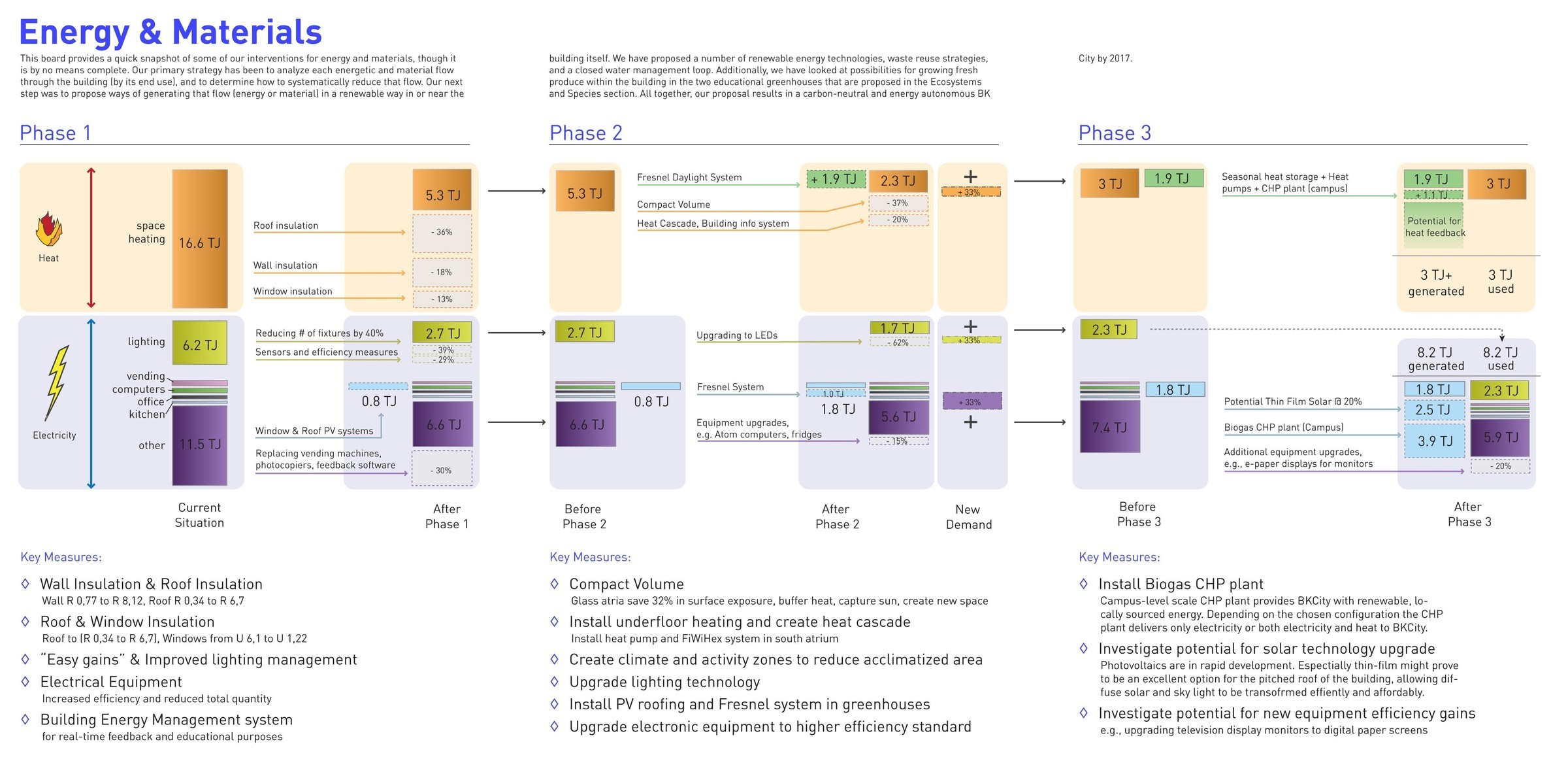

BKCity Slim Refurbishment
Sustainable Renovation of TUDelft's Architecture Faculty
Mar 15, 2011

BKCity is a magnificent listed monument of more than 30,000m2 functioning as the faculty of Architecture of the TU Delft. Except created a phased plan to make this historic educational building energy and carbon-neutral within ten years. The plan converts the building into a didactic tool that puts sustainability at the heart of education for generations of architects, introducing a unique in-building ecosystem that provides an inspiring environment, functional qualities, and cost savings.
The BK City Slim Project provided an ideal opportunity to apply Except’s integrated approach to sustainable refurbishment. Except as one of five international teams invited by the Technical University of Delft to design a sustainable vision for their newly relocated architecture faculty after a 2008 fire left the original building in ruins.
The newly chosen building, dubbed BK City, is a historic 1920s labyrinthine brick structure whose contemporary funky furniture and colorful designs belied a less wallet-friendly energy bill. Except designed a feasible plan and sustainable vision, shared through posters, presentations, and a detailed report.

Our project began with the idea of the building not only as a structure that houses knowledge but as one that can impart it. While focusing on increasing energy efficiency and decreasing operating costs, we also embraced the refurbishment of BK City as an opportunity to improve students’ hands-on experience and understanding of sustainability. We designed the interventions to be participatory, didactic, and engaging, providing students with a 21st-century knowledge base they could leverage within and beyond BK City.
BK City is more than a building: it connects many individuals' lives and functions as a learning platform for generations of architects and urban planners. It acts as the social and functional hub of the disciplines it serves.
This vision informed the central goal of the project: to transform buildings into a didactic tool that anticipates and responds to the shift in architectural design. The aim is to influence beyond its walls through the actions of those it has educated.

We broke our analysis and approach into the components we rely on in all our projects to ensure that sustainability is addressed in an integrated manner: Energy & Materials, Ecosystems & Species, Culture & Economy, and Health & Happiness.
In addition to these four thematic streams, we also created a phased vision that interweaves easy energy gains and immediate solutions with more ambitious and systemic interventions. Each intervention has cross-cutting benefits, and each phase is designed to build on the one before it, offering an integrated vision for BK City, which evolves.
Energy & Materials Highlights:
Ecosystems & Species Highlights:
Culture & Economy Highlights:
Health & Happiness Highlights:

The result is a highly didactic building with exemplary environmental quality, an indoor plant ecosystem, more than 10.000 m2 of extra space, energy, and operationally sustainable water usage, and a plan that is feasible and phase-able (with a total of less than € 25 million invested over ten years).
A special thanks goes to
March 15, 2011
Director
Head of Science, Industrial Ecologist
Industrial Ecologist
Except Integrated Sustainability
Communications Design
Except Integrated Sustainability
Urban Ecologist
Except Integrated Sustainability
Designer
Except Integrated Sustainability
Designer
Except Integrated Sustainability
Engineering
Atelier Ten